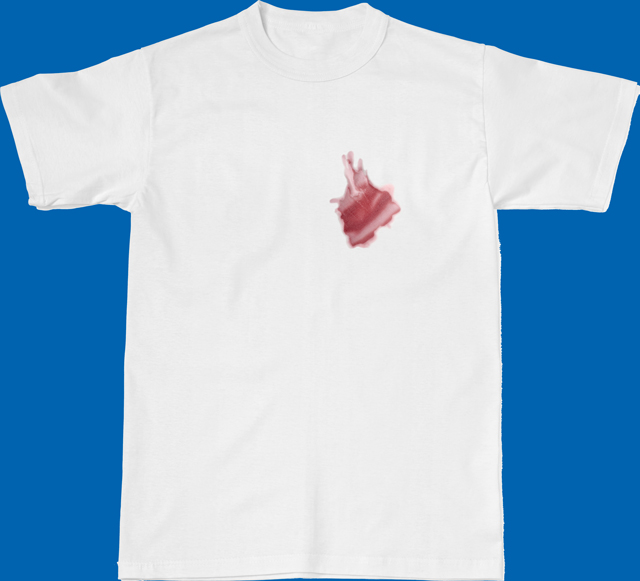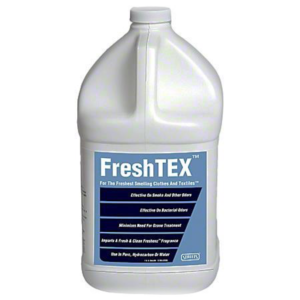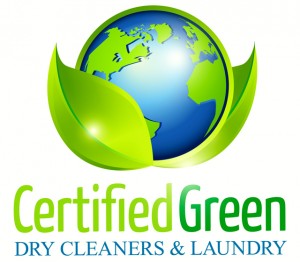Question:
How can crayon stains be removed?
Answer:
Crayons are wax with dyes built in. These stains appear as layers of shiny and stiff residue, usually after exposure to heat (drying), since heat melts the wax and the dyes deposit themselves on the clothing.
These items should be taken to your professional drycleaner, who will dry clean them to remove this waxy build up. After that, the technician will spot out the remaining dye through traditional stain removal procedures.
Question:
Any tips on how to manage cooler weather wardrobes?
Answer:
As summer changes to fall, it is time to consider the end-of-summer changeover and prepare you for some of the cold weather garment stains and considerations.
Cleaning Closets and storage changeover
Depending on how careful and attentive you were last spring when storing you winter clothing, refreshing these items may include inspection for any summer insect damage. Insects such as moths, beetles, and cockroaches tend to feed on clothes that had spills or stains that were never removed. Small holes, worn areas, and discoloration are signs of insect activity. Naphtha odor from moth balls or crystals is very heady and stubborn to remove. Airing the garments by hanging them often helps as well as a cleaning by your professional dry cleaner.
Winter Wardrobe
The content of your seasonal wardrobe changes with the changing seasons. When it comes to useful cleaning tips, remember to follow the care labels exclusively. Many items will be hand or machine washable. Minimize agitation to prevent matting and pilling of napped fabrics; a cleaner who uses net bags to reduce impact and abrasion in the machine will return a better quality result to you. Knits may require blocking to return them to their original shape and size; this may require additional labor and slightly higher charges to finish them. Follow recommended drying temperatures. Other materials, such as wool, fur, and leather, will require the assistance of a professional cleaner due to special cleaning and pressing procedures. Make sure to point out any known stains to your cleaner when you can.
Halloween Costumes
Halloween is the first garment challenge of the fall; and getting stains out of some costumes can be difficult. The excitement of the holiday often throws caution to the wind by the wearer. If a care label is present, follow the instructions carefully. Many of these garments, however, are “homemade” with various fabrics and trims and have no care instructions. If so, use extreme caution in evaluating it for possible stains and damage. Cosmetics, paints, hair colorings, and even foods and beverages may require pre-treatment. Waxed based decorations may need solvent-based products to remove them. Consult your professional dry cleaner for the best procedures.
Quick tips to remember:
- For some costumes, unusual trims or features may need to be removed prior to washing or dry cleaning.
- Hand washing may be safer for some costumes.
- After washing, hang costumes to air dry instead of drying in heat.
Question:
How do I clean gloves, hats, and other scarves?
Answer:
If care labels are present, follow instructions carefully. Many synthetics, as well as cottons and wools, are hand or machine washable. Minimize agitation to prevent matting and pilling of napped fabrics; a cleaner who uses net bags to reduce impact and abrasion in the machine will return a better quality result to you. Knits may require blocking or stretching to return them to their original shape and size; this may require additional labor and slightly higher charges to finish them. If tumble drying is recommended, use a low temperature setting. Wool, fur, and leather accessories may require the assistance of a professional cleaner. These materials require special cleaning and finishing procedures. Any known stains should be pointed out when you leave them with the cleaner. Most items will clean beautifully, but accessories, particularly gloves, are exposed to many staining substances that cannot be removed.
Question:
How do I get the best out my winter coat?
Answer:
Depending on the coat’s fiber content, how to care for the coat will vary. For the most part, following these general tips will give you longer life and a more satisfactory outcome:
- Wear scarves to avoid soiling of the collar, especially for leather and suede. Oily stains and cosmetics from hair and skin can permanently stain fabric or skins.
- Make an effort to clean the coat at least once during the season and again before storing.
- Follow the care label instructions when cleaning. If in doubt, consult your professional dry cleaner.
- When storing the coat, use a padded hanger and store it in a well-ventilated closet.
- Treat stains immediately to keep them from setting; especially salt and slush which may contain nitrates and nitrites which can pull color.
Question:
What things should I look for to ensure I am getting a nice quality comforter?
Answer:
Although cleaning down items is not usually a problem, a garment with poor construction and insufficient quilting can cause the down to shift, lose shape or become matted. Inspect the comforter for these things before purchasing:
- Make sure the item is well quilted. Preferably, quilting stitches should run both vertical and horizontally with quilting lines about 8 to 10 inches apart. Pockets should be firm and full without large area of empty space which will only get worse with usage and cleaning.
- Check the strength of the garment’s stitching. Poorly constructed items with loose stitching can allow the down to shift.
- Check for fullness of the quilted areas. Thicker filling will provide more insulation and better heat retention.
- There is a difference between goose down and duck down. Items manufactured in regions which do not regulate the source and content of natural fillings may be subject to degradation of the fill during even professionally controlled cleaning procedures. Duck down, which may not have been properly stabilized, may lose natural oils that may migrate to the outside of the shell during cleaning. This causes an unsightly or unexpected change in appearance or color.
Question:
How do I remove chocolate from any item safely?
Answer:
While most hard-candy stains can be removed by regular washing methods, chocolate stains are a special challenge because they contain both oils and sugars. For best results, try pretreating the area with dry cleaning solvent and then place the affected area over several layers of white paper towels and blot. If the stain remains, blot with a mild detergent (with enzyme action is usually safe) or oxygenating product, and then rinse with cool water. If these efforts still do not remove the stain, try using a solution of one teaspoon of white vinegar per cup of water. Rinse with water. If all other methods fail, you may need to use bleach (all fabric is usually the safest), but remember to test for colorfastness. Any remaining stain may be removed by laundering according to the care label instructions. Be careful to inspect the item before you expose it to the heat of the dryer. Drying in heat often sets remaining stains or “phantoms”. Your professional dry cleaner is equipped to assist you with this stain as well.
Question:
Are there any simple steps that I can take at home to remove typical holiday stains?
Answer:
Holidays bring special challenges in terms of complex food and beverage stains which can affect the spirit of the holidays. These joyous occasions often result in stains that soil “favorite” garments and “Grandma’s” tablecloth. Royal Majestic Cleaners has assembled some easy-to-use tips and tricks to ensure that this year, stains don’t spoil your joyous occasion.
Apple cider, cranberry sauce, gravy, and eggnog stains are most common; combined with wine, tea, coffee and soft drinks and you have quite the project. Here are some easy and practical ideas that may help you remove the stains and enjoy your holidays!
TIPS FOR STAINS OF ANY KIND
Always test the color-fastness of the fabric before attempting any type of stain removal.
Treat stains as soon as possible to avoid having them set.
If the garment is dry-cleanable, it should be handled professionally.
TIPS FOR LIQUID STAINS (wine, tea, coffee, soda, cranberry sauce and apple cider)
Rinse the stain with cold water.
Blot it with mild dishwashing liquid or a mild detergent and rinse.
If the stain is still present, blot with white vinegar, then rinse thoroughly.
When all else fails, try 3% hydrogen peroxide (available at any drug or grocery store) but first test it in an unexposed area such as a seam or shoulder pad to be sure it’s safe for the fabric and color.
EGGNOG & GRAVY STAINS
Blot the stain with cold water and mild detergent, then rinse.
If the stain persists, take a small amount of powdered detergent and mix with one ounce of non-sudsing household ammonia to form a paste and apply to the stained area for 5 to 10 minutes, then launder as usual.
Caution: DO NOT USE this procedure on silk or wool garments. For these fabrics, use a mild detergent and rinse thoroughly.
If none of these tips remove the stains, call Royal Majestic Cleaners, who will pick-up your items at no charge, and with no environmental surcharges as other large concerns in our area. We have a few stain removal tricks that you can’t safely attempt at home. Finally, PLEASE let us know what you have already tried at home, so we are alerted to achieve the best solution to your problem!





